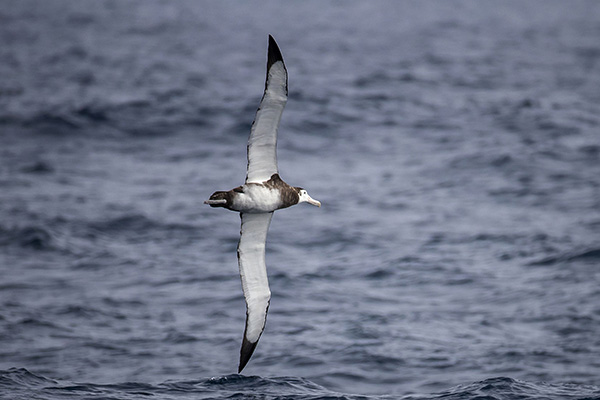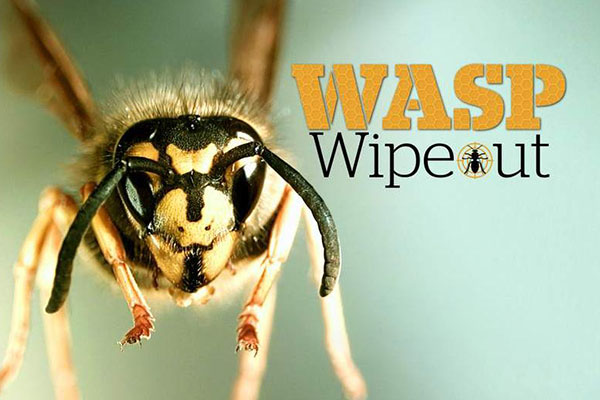
In 2016 Stuff’s Nelson office joined forces with the Department of Conservation and the Tasman Environmental Trust to target one of New Zealand’s most destructive pests, a pest wreaking havoc in the region’s three national parks. The Wasp Wipeout campaign has since gradually spread its reach across much of the South Island and into the North. As each year goes by, new tools are added to fight invasive wasps and very real progress is being made.
National correspondent Charlie Mitchell looks at how the invasive wasp has been able to flourish and talks to the scientists working at the coal face in a bid to bring the numbers under control.
Spare a thought, if you can, for the Kowhai moth caterpillar.
This native critter is commonly found throughout New Zealand, usually searching for a native Kowhai tree to munch on. They’re not particularly remarkable, or well known, in their own right – they rarely attract notice until they’ve razed a Kowhai of its leaves.
But they serve to illustrate how one introduced predator can fundamentally transform an ecosystem by nothing more than sheer force of numbers.
One place you’ll struggle to find a kowhai moth caterpillar is in the north-western South Island. This is the land of the honeydew beech forest, where the trees glisten with nectar and the air is thick with the sweet smell of sugar – the landscape equivalent of a lolly shop.
It is due to a strange phenomenon; The beech trees are crawling with scale insects, tiny bugs which feed on the bark of the native trees. When the insects feed on the trees, they extract sugar, which they excrete through their long anal tubes. The end product is a wisp of honeydew, dripping from the trees (if this sounds revolting, keep in mind it’s not radically different to how bees produce honey).

Honeydew on a Beech tree. ALDEN WILLIAMS/STUFF
Honeydew on a Beech tree. ALDEN WILLIAMS/STUFF
These forests, in theory, are an Eden-like spot for a caterpillar with a sweet tooth. But they were long ago taken over in a bloody coup by an invasive pest, one that does not tolerate competition and kills almost everything it encounters.
Around two decades ago, researchers wanted to see just how dominant this invasive species had become. To do so, they measured the survival rate of Kowhai moth caterpillars placed in these forests.
Their searchers found the odds of a caterpillar surviving for three hours were just 17 per cent; the odds of it surviving a day were about 0.1 per cent. It was virtually impossible for a caterpillar to survive long enough to become a moth.
They tried a similar experiment with the orb-web spider, originally from Australia but widespread in New Zealand. The results were similar; a spider’s chances of making it through a season were virtually nil.
It is likely many other critters have been banished from the beech forests in this way; These are just the species that have been proactively studied.
It is a consequence of the stunning scale and efficiency of vespula wasps, which for many years have ruled the forests with an iron grip.
Since they arrived from Europe over the last century, two species of vespula wasp – the German wasp and the common wasp – have dominated virtually all forms of life in these forests, once a haven for threatened biodiversity.
In a given season, the wasps can extract more than 90 per cent of a forest’s honeydew, leaving little for the native birds and invertebrates. During summer and early autumn, if you weighed every wasp in the beech forests – one wasp weighs less than 0.1g – they would weigh about 19 times more than all of the birds combined.
Once autumn arrives, the sound of birdsong has been swallowed by the relentless, monotonal thrum of millions upon millions of droning wasps.

UNIVERSITY OF AUCKLAND ENTOMOLOGIST PROFESSOR JACQUELINE BEGGS
UNIVERSITY OF AUCKLAND ENTOMOLOGIST PROFESSOR JACQUELINE BEGGS
“When they’re at really high numbers in some of those forests, I’d rank them above any of the other pests, because the numbers are so high and they’re hitting absolutely everything in the ecosystem.”
Beggs was one of the researchers who studied the wasps’ impact on the Kowhai caterpillar moth, and she has published regular research on the pests in the three decades since.
She came across the wasp problem in the late 1980s, when she was researching Kākā, one of New Zealand’s three native parrots. The South Island subspecies, largely confined to the northwestern beech forests, appeared to be struggling to breed – she and her fellow researchers had only found one successful Kākā nest in six years.
The cause soon became clear. Kākā rely on energy extracted from honeydew to mate – their mating sessions can last 15 minutes, which is an eternity in bird terms – but the massive beech forests, once glistening with honeydew, were being stripped bare by wasps.
Their research was recounted in Bandits of the Beech Forest, a 1996 documentary produced by Natural History New Zealand. It contains astonishing footage of the ferocity of wasps – in one scene, a swarm rips apart a stick insect. They’ve even been known to attack baby birds, albeit not frequently.
The number of wasps has likely led to broad declines in birdlife beyond Kākā. One study found a notable decline in common native bird numbers over a 30-year period in which the wasps became dominant.

A couple of wasps sit at the mouth of a nest in a tree trunk. BRADEN FASTIER/STUFF
A couple of wasps sit at the mouth of a nest in a tree trunk. BRADEN FASTIER/STUFF
What makes wasps such a difficult foe, Beggs says, is their organisational structure.
Vespula wasps are social wasps, meaning they exist as a collective with a strict hierarchy. Each nest has a queen, and hundreds, if not thousands, of workers. The workers construct the nest and feed the larvae, which are only produced by the queen.
If you kill a rat or a stoat, it can no longer breed – you’ve made a dent, even if it’s a small one.
“For social insects, you can trap and kill any number of workers in the forest, but if you don’t touch the queen, you're not actually gaining anything,” Beggs says.
“The fact they’re a social insect makes them a little bit trickier to deal with than many other species that operate more independently.”

Another aspect to the problem is how well they’ve flourished here, far more so than in their native range.
Researchers have found as many as 40 wasp nests per hectare in the Tasman region, among the highest wasp densities reported anywhere in the world. With 1m hectares of beech forest, and thousands of wasps per nest, the sheer number of wasps becomes impossible to fathom.
A typical wasp nest will not survive the winter, but those that do can grow to astonishing size - for many years, a nest found in Waimauku north of Auckland held the Guinness world record for the largest ever found, being nearly 4m tall and 1.8m wide.

Edward Trolove with the now dead wasp nest he discovered on a bank next to the Cable Bay Road near Nelson. MARTIN DE RUYTER/STUFF
Edward Trolove with the now dead wasp nest he discovered on a bank next to the Cable Bay Road near Nelson. MARTIN DE RUYTER/STUFF
Around one in 10 German wasp nests in New Zealand survive the winter, a higher rate than they do elsewhere.
Combined with this structural efficiency – a single hive can produce thousands of wasps in just a few months – is both the brutality and ingenuity of individual wasps.
“They’ll eat just about anything,” says Professor Phil Lester, an ecologist at the Victoria University of Wellington.

Professor Phil Lester studies the effects of invasive species of wasps, and how they might be controlled. SUPPLIED
Professor Phil Lester studies the effects of invasive species of wasps, and how they might be controlled. SUPPLIED
“They eat nectar, other insects, dead things on the road… They’re really efficient predators. It comes down to abundance, but they’re also clever – they find resources and outcompete other species for them.”
A particularly galling fact is that the social wasps have no natural predators in New Zealand - they could simply arrive, enjoy the temperate weather, and set about transforming our beech forests into an unrecognisable state.
“New Zealand was ripe for the picking,” Lester says.

Fighting back
At his office in Lincoln near Christchurch, Dr Bob Brown, an ecologist at Landcare Research, has an incubator containing precious cargo.

Dr Bob Brown of Landcare Research says a parasitic species could be the ticket to controlling wasp populations.
Dr Bob Brown of Landcare Research says a parasitic species could be the ticket to controlling wasp populations.
It holds a potent weapon that may be the best defence against wasps New Zealand has ever had at its disposal.
It’s called volucella inanis, and it’s a large hoverfly with the characteristic black and yellow stripes of a wasp. Humble as the hoverflies might appear, they are the greatest hope in decades for fighting back wasps in meaningful numbers.

Volucella inanis is a hoverfly that is used for biological control of wasps. SUPPLIED
Volucella inanis is a hoverfly that is used for biological control of wasps. SUPPLIED
The hoverfly’s method for destroying wasps is an ode to evolution. It looks and smells so much like a wasp that it can fly into a nest undetected, laying its eggs inside amidst the oblivious drones. Each fly larva consumes at least two wasp larva, which has a devastating effect on wasp numbers.
V. inanis isn’t the only agent with promise. The other is Metoecus paradoxus, the wasp nest beetle. Each beetle is about 1cm long, with spindly antennae that look like freshly spruced eyelashes. They live for about a week – a lifespan so short a beetle likely does not eat at any point in its life.

Metoecus paradoxus is a beatle also used for the biological control of wasps. SUPPLIED
Metoecus paradoxus is a beatle also used for the biological control of wasps. SUPPLIED
In autumn, adult beetles lay eggs in decaying wood and bark around a wasp nest. By spring, wasps will be scrounging for material to expand their nests – and unwittingly pick up a beetle larva, which happens to be expressing a pheromone similar to that of a wasp queen.
Attached to the wasp, the beetle glides into the nest undetected; Undercover and behind enemy lines, it attacks and consumes wasp larvae. In enough numbers, they can collapse an entire nest.
Both are parasitoids, which co-evolved with wasps – they exist only to consume them, and they do so successfully. In a recent survey of wasp nests in the UK, V. inanis were found in every one, Brown says.
For years, his work has been dedicated to looking for an agent like these – ones that, if released, might fight back the wasp hordes. It has involved frequent trips to the UK, deconstructing nests to see what they contain, often racing badgers – perhaps the most efficient wasp killer of all – to get there first.
It has involved researching bizarre and gruesome parasitoids, like the wasp-grabber fly, which rips into a live wasp’s abdomen, lays eggs inside, and brainwashes the wasp to bury itself underground; it required figuring out how to breed obscure insects and keep them alive on the other side of the world.

LANDCARE RESEARCH ECOLOGIST DR BOB BROWN
LANDCARE RESEARCH ECOLOGIST DR BOB BROWN

Finally, in 2021, permission was granted by the Environmental Protection Authority (EPA) to start releasing the two parasitoids into the wild. He expects to start releasing the hoverflies soon – his beetles did not survive – once they’ve accumulated in enough numbers.
It’s been a lengthy process: “It's a very steep and expensive learning curve,” Brown says.
“You can’t just chuck them on a plane and pick them up at the airport.”
To some readers, this line of reporting might trigger unease. New Zealand, perhaps more than any other country, knows the potential consequences of releasing a new species to control another that has run rampant.
It’s different these days. Unlike the hapless settlers who released stoats and ferrets to control rabbits, modern releases are intensively studied and regulated.
In the case of both the approved agents, the risk of disaster is minuscule – they are inextricably tied to social wasps (New Zealand’s native wasps are not social), and have demonstrated no impact on bees.
The greatest risk, Brown says, is that they may – for whatever reason – not work as well as they’d hoped.
“The biggest risk is that we spend all this money doing this research and introducing these and they don’t establish, or they establish and they don’t have as much of an effect as we are hoping.”
It is likely that, even if successful, the biocontrol agents will not be a silver bullet. They will help suppress wasp numbers, but not eradicate them completely.
It will join other technologies that have shown promise. The most notable is Vespex, a product developed by scientist Dr Richard Toft. It is a poisonous bait with its own clever method of disrupting the wasp’s social structure.

Wasps feeding on Vespex bait. SUPPLIED
Wasps feeding on Vespex bait. SUPPLIED
Worker wasps are unable to digest solid food. To eat, they must feed larvae in the hive, which digest and regurgitate the food back to the male wasp, a process called trophallaxis.
Vespex is a toxic bait that attracts wasps, which feed it to the larvae, which die.
It is remarkably effective and is used by conservation groups, farmers, beekeepers, and regular citizens fed up with wasps.
“People are often amazed at how quickly it works,” Toft says.
“Basically, you have a lot of wasps in a forest, put out the Vespex, come back the next day and it’s virtually quiet.”
It does, however, have downsides. Because it is a toxin, it cannot currently be spread safely over large areas, particularly those that are hard to reach.
Toft is working on ways of doing so, including deploying drones to deliver the bait. But its use, for now, is likely to remain in busy, accessible areas.

Richard Toft developed Vespex, a poisonous bait that wasps take back to their nests. BRADEN FASTIER/STUFF
Richard Toft developed Vespex, a poisonous bait that wasps take back to their nests. BRADEN FASTIER/STUFF
Vespex is the main weapon in Stuff’s Wasp Wipeout project, which kicked off in Nelson Tasman in 2016 and is gradually expanding throughout the country with support from community groups, DOC, crowd funding and business sponsorships.
Bait stations are often placed alongside mammal trapping lines, cutting down the need for extra manpower. In six years, more than 500km of bait lines have been installed, covering 20,000 hectares.
The only silver bullet on the horizon is a controversial one – a gene drive.
This technology has been mooted as a gamechanger for conservation in New Zealand. Using technology such as CRISPR, a reproductive gene could be introduced into the wasp population that spreads infertility. If successful, it would eradicate wasps from New Zealand without killing a single one.
“There are lots of ethical issues to think about, which I think are probably harder than the actual science of doing a gene drive… The science is possibly the easiest part,” says Phil Lester, who has been researching gene drives.

Kūmānu Environmental senior ranger John Whibley and ranger Louis Pierson place Vespex wasp bait stations along the Cable Bay Walkway. BRADEN FASTIER/STUFF
Kūmānu Environmental senior ranger John Whibley and ranger Louis Pierson place Vespex wasp bait stations along the Cable Bay Walkway. BRADEN FASTIER/STUFF
As the wasp problem has worsened, devastating native flora and fauna, there is finally hope on the horizon.
“The wasp research community has made great strides in the last five or 10 years,” says Dr Erik van Eyndhoven, associate director of conservation at The Nature Conservancy.

ASSOCIATE DIRECTOR OF CONSERVATION AT THE NATURE CONSERVANCY DR ERIK VAN EYNDHOVEN
ASSOCIATE DIRECTOR OF CONSERVATION AT THE NATURE CONSERVANCY DR ERIK VAN EYNDHOVEN
van Eyndhoven works with the Kotahitanga mō te Taiao Alliance, which brings together eight iwi, councils, and the Department of Conservation (DOC) to drive better conservation outcomes in the northern South Island.
The alliance has agreed to support the release of the biocontrol agents, reflecting a consensus locally around the seriousness of the wasp problem.
At a national level, however, wasps remain under the radar. They were excluded from the Predator Free 2050 strategy, which aims to eliminate mammalian predators.
Seriously fighting back wasps would likely have national benefits. In his former job at the Ministry for Primary Industries, van Eyndhoven was involved in a report that estimated the economic cost of German and common wasps.
The effects were widespread, across many industries, which he rattles off: “Tourism, forestry operators, anybody who’s working out in the environment, the general public, the agriculture industry, the wine industry, and overseas they're even implicated in losses in the dairy industry… if you aggregate their impact across all those industries, you find that it’s a very significant pest for New Zealand.” The total cost was in the vicinity of $130m a year, the report found.

A relatively recent invader, the paper wasp, is mostly found in urban areas with much smaller nests than the aggressive vespula varieties. MARTIN DE RUYTER/STUFF
A relatively recent invader, the paper wasp, is mostly found in urban areas with much smaller nests than the aggressive vespula varieties. MARTIN DE RUYTER/STUFF
The ultimate impact is one that is perhaps easier to avoid, which may explain the wasp’s absence on the national radar.
“I frequently grizzle to my colleagues at Predator Free 2050 and say you don’t mean predator-free, you mean mammalian predator-free,” Jacqueline Beggs says.
“I think it’s a very human bias… we can rave on about Kākāpō and Kokako and all those wonderful things we're trying to save, but you seldom hear from people with quite the same passion for saving our native invertebrates.”
It may take many more years, but we can now realistically imagine a country with fewer wasps – the return of birdsong in the beech forests, the ease of safely going outdoors in the autumn months, a balanced ecosystem with bugs and geckos and birds all in sync.
“I wish I could put a lot of the New Zealand public in the middle of a beech forest in April every year so they can hear the hum of the wasps, for them to try and sit down and eat a sandwich and when they get swamped, just to appreciate the densities and the effects the wasps are having on those ecosystems,” Phil Lester says.
“I don’t think that people really appreciate how much of a problem wasps are.”
Other Wasp Wipeout stories
Getting to the truth takes patience and perseverance. Our reporters will spend days combing through documents, weeks cultivating delicate sources, and months – if not years – fighting through the Official Information Act, courts and red tape to deliver their stories.
By supporting Stuff you’ll help our journalists keep the pressure on. Make a contribution from as little as $1 today.








